In the highly competitive segment of compact SUVs, two models stand out: the Dacia Duster and the Jeep Avenger. While both vehicles offer distinct advantages, they cater to different driving needs and preferences. This article delves into a detailed comparison of the two, focusing on their technical aspects, performance, and innovations.
Dacia Duster vs Jeep Avenger – Which car suits you better?
Everyday use, family trips or long-distance drives – here’s where the differences show.
Discover whether Dacia Duster or Jeep Avenger fits your lifestyle better.
Performance and Powertrains
The Dacia Duster boasts a range of engine options that include LPG, full hybrid, and petrol MHEV variants. Its output spans from 91 hp to a robust 140 hp. With the choice of front-wheel drive or all-wheel drive and manual to automatic transmission options, the Duster caters to diverse driving preferences. The maximum torque reaches up to 230 Nm, contributing to a solid performance especially at low rpm. The acceleration from 0-100 km/h is respectable, peaking at 9.9 seconds in its most powerful incarnation.
On the other hand, the Jeep Avenger is a more modern contender with a focus on electric performance alongside traditional petrol options. The electric variant delivers an impressive 156 hp, with an acceleration of just 9 seconds for the 0-100 km/h sprint. The Avenger uses front-wheel drive and is equipped with a battery capacity of 51 kWh, offering a substantial electric range of up to 400 km. For those preferring petrol, the Avenger offers a MHEV option that balances efficiency and performance.
Fuel Efficiency and Environment
When it comes to fuel consumption, the Duster’s petrol variants range from 5.0 to 8.1 L/100 km, depending on the engine choice. This level of efficiency is complemented by CO2 emissions ranging from 114 to 147 g/km, categorized mostly in the C to E classes. The Duster appeals to those looking for value without compromising on practicality.
In comparison, the Jeep Avenger excels in eco-friendliness, particularly with its electric model, which boasts zero emissions. The petrol variants maintain a competitive consumption figure of 5.7 L/100 km, with CO2 emissions in the range of 0 to 130 g/km, placing it mainly in the A to C efficiency classes. This makes the Avenger an appealing choice for environmentally conscious drivers.
Interior Space and Comfort
Both vehicles provide comfortable seating for up to five passengers and feature spacious interiors typical of compact SUVs. The Dacia Duster offers generous trunk capacity ranging from 430 L to an impressive 517 L, making it a practical choice for families or those needing ample cargo space.
The Jeep Avenger, while slightly smaller, provides a respectable trunk space of 355 L to 380 L. Despite its more compact dimensions, the Avenger’s interior design prioritizes user comfort and convenience with modern touches and connectivity options, making it a great choice for tech-savvy drivers.
Safety and Technology Innovations
In terms of safety features, both vehicles are equipped with essential driver-assistance systems. The Duster is known for its rugged build and practicality, ensuring it handles off-road conditions well, thanks to its optional all-wheel drive. The latest models come equipped with advanced safety features and technologies that ensure a comprehensive driving experience.
The Jeep Avenger, representing a newer generation, integrates innovative technologies with a range of advanced driver assistance systems. These include adaptive cruise control, lane-keeping assist, and an updated infotainment system that enhances the overall driving experience.
Conclusion: Which Is Right for You?
Choosing between the Dacia Duster and Jeep Avenger comes down to individual needs and lifestyle. The Duster represents a robust, value-driven option with versatile engine choices and practicality, ideal for families or those seeking an affordable SUV. In contrast, the Jeep Avenger appeals to environmentally-conscious drivers and those favoring modern technology without sacrificing performance.
Ultimately, whether you prioritize fuel efficiency, eco-friendliness, or versatility, both of these compact SUVs offer attractive packages catered to various preferences. It’s essential to consider your specific needs and test drive both models to determine the perfect fit for your driving style.
Here’s where it gets real: The technical differences in detail
Costs and Efficiency:
Price and efficiency are often the first things buyers look at. Here it becomes clear which model has the long-term edge – whether at the pump, the plug, or in purchase price.
Dacia Duster has a clearly perceptible advantage in terms of price – it starts at 16300 £, while the Jeep Avenger costs 21900 £. That’s a price difference of around 5665 £.
Fuel consumption also shows a difference: Dacia Duster manages with 4.70 L and is therefore hardly perceptible more efficient than the Jeep Avenger with 4.90 L. The difference is about 0.20 L per 100 km.
Engine and Performance:
Power, torque and acceleration say a lot about how a car feels on the road. This is where you see which model delivers more driving dynamics.
When it comes to engine power, the Dacia Duster has a barely noticeable edge – offering 158 HP compared to 156 HP. That’s roughly 2 HP more horsepower.
In acceleration from 0 to 100 km/h, the Jeep Avenger is barely noticeable quicker – completing the sprint in 9 s, while the Dacia Duster takes 9.40 s. That’s about 0.40 s faster.
In terms of top speed, the Jeep Avenger performs minimal better – reaching 194 km/h, while the Dacia Duster tops out at 180 km/h. The difference is around 14 km/h.
There’s also a difference in torque: Jeep Avenger pulls to a small extent stronger with 260 Nm compared to 230 Nm. That’s about 30 Nm difference.
Space and Everyday Use:
Whether family car or daily driver – which one offers more room, flexibility and comfort?
Both vehicles offer seating for 5 people.
In curb weight, Jeep Avenger is to a small extent lighter – 1180 kg compared to 1377 kg. The difference is around 197 kg.
In terms of boot space, the Dacia Duster offers noticeable more room – 517 L compared to 380 L. That’s a difference of about 137 L.
In maximum load capacity, the Dacia Duster performs noticeable better – up to 1609 L, which is about 332 L more than the Jeep Avenger.
When it comes to payload, Jeep Avenger slight takes the win – 502 kg compared to 453 kg. That’s a difference of about 49 kg.
Who comes out on top?
Overall, the Dacia Duster shows itself to be only a minor advantage and secures the title of DriveDuel Champion.
It convinces with the more balanced overall package and proves to be the more versatile choice for everyday use.
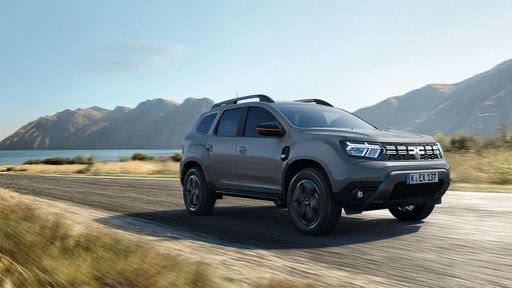 @ Dacia / Renault Group Media
@ Dacia / Renault Group Media
Dacia Duster
Dacia Duster
The Dacia Duster is a no-nonsense compact SUV that delivers rugged practicality and surprisingly comfortable everyday driving without fuss. It might not win any beauty contests, but its honest design, easy-to-live-with cabin and tough attitude make it a smart pick for buyers who want reliable transport without luxury frills.
details @ Dacia / Renault Group Media
@ Dacia / Renault Group Media
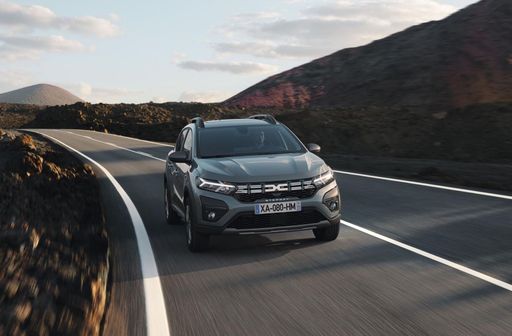 @ Dacia / Renault Group Media
@ Dacia / Renault Group Media
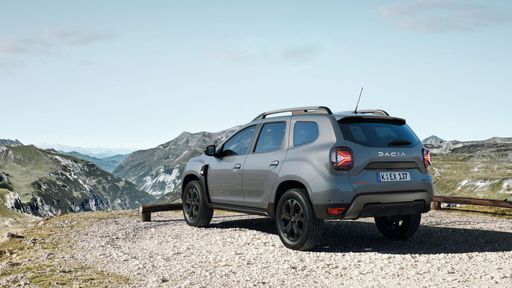 @ Dacia / Renault Group Media
@ Dacia / Renault Group Media
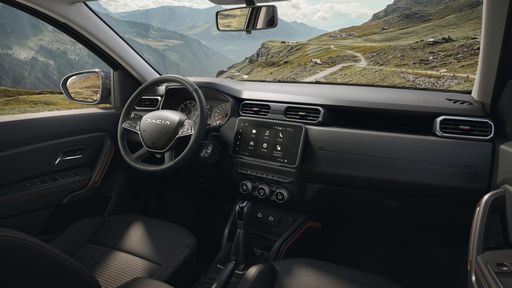 @ Dacia / Renault Group Media
@ Dacia / Renault Group Media
Jeep Avenger
The Jeep Avenger shrinks Jeep's boxy, adventurous styling into a city-friendly electric crossover that looks just as at home on tight streets as it does on muddy weekend lanes. It's a savvy pick for drivers who want go-anywhere attitude without the truck-size ego — practical inside, lively around town and ready to tackle a bit of rough stuff when the mood strikes.
details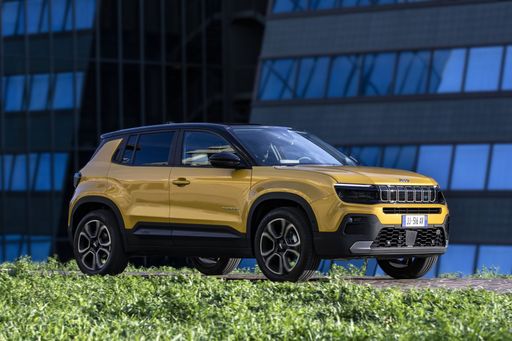 @ Jeep / Stellantis Media
@ Jeep / Stellantis Media
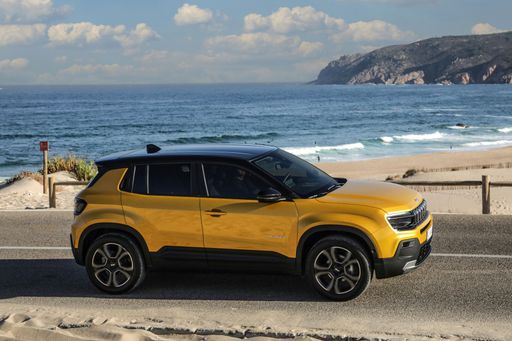 @ Jeep / Stellantis Media
@ Jeep / Stellantis Media
 @ Jeep / Stellantis Media
@ Jeep / Stellantis Media
 @ Jeep / Stellantis Media
@ Jeep / Stellantis Media
 @ Jeep / Stellantis Media
@ Jeep / Stellantis Media
 @ Dacia / Renault Group Media
@ Dacia / Renault Group Media
|
 @ Jeep / Stellantis Media
@ Jeep / Stellantis Media
|
|
|
|
Costs and Consumption |
|
|---|---|
|
Price
16300 - 24900 £
|
Price
21900 - 36900 £
|
|
Consumption L/100km
4.7 - 7.5 L
|
Consumption L/100km
4.9 - 5.7 L
|
|
Consumption kWh/100km
-
|
Consumption kWh/100km
15.50 kWh
|
|
Electric Range
-
|
Electric Range
400 km
|
|
Battery Capacity
0.60 kWh
|
Battery Capacity
51 kWh
|
|
co2
107 - 124 g/km
|
co2
0 - 129 g/km
|
|
Fuel tank capacity
50 L
|
Fuel tank capacity
44 L
|
Dimensions and Body |
|
|---|---|
|
Body Type
SUV
|
Body Type
SUV
|
|
Seats
5
|
Seats
5
|
|
Doors
5
|
Doors
5
|
|
Curb weight
1377 - 1455 kg
|
Curb weight
1180 - 1520 kg
|
|
Trunk capacity
348 - 517 L
|
Trunk capacity
325 - 380 L
|
|
Length
4343 mm
|
Length
4084 - 4088 mm
|
|
Width
1813 mm
|
Width
1776 mm
|
|
Height
1656 - 1659 mm
|
Height
1527 - 1541 mm
|
|
Max trunk capacity
1414 - 1609 L
|
Max trunk capacity
1218 - 1277 L
|
|
Payload
450 - 453 kg
|
Payload
494 - 502 kg
|
Engine and Performance |
|
|---|---|
|
Engine Type
Petrol MHEV, Full Hybrid, LPG
|
Engine Type
Electric, Petrol, Petrol MHEV
|
|
Transmission
Manuel, Automatic
|
Transmission
Automatic, Manuel
|
|
Transmission Detail
Manual Gearbox, Automated Manual, Dual-Clutch Automatic
|
Transmission Detail
Reduction Gearbox, Manual Gearbox, Dual-Clutch Automatic
|
|
Drive Type
Front-Wheel Drive, All-Wheel Drive
|
Drive Type
Front-Wheel Drive, All-Wheel Drive
|
|
Power HP
115 - 158 HP
|
Power HP
100 - 156 HP
|
|
Acceleration 0-100km/h
9.4 - 11.6 s
|
Acceleration 0-100km/h
9 - 10.6 s
|
|
Max Speed
180 km/h
|
Max Speed
150 - 194 km/h
|
|
Torque
190 - 230 Nm
|
Torque
205 - 260 Nm
|
|
Number of Cylinders
3 - 4
|
Number of Cylinders
3
|
|
Power kW
84 - 116 kW
|
Power kW
74 - 115 kW
|
|
Engine capacity
1199 - 1789 cm3
|
Engine capacity
1199 cm3
|
General |
|
|---|---|
|
Model Year
2025
|
Model Year
2023 - 2025
|
|
CO2 Efficiency Class
D, C
|
CO2 Efficiency Class
A, D, C
|
|
Brand
Dacia
|
Brand
Jeep
|
What drivetrain options does the Dacia Duster have?
The Dacia Duster is offered with Front-Wheel Drive or All-Wheel Drive.
The prices and data displayed are estimates based on German list prices and may vary by country. This information is not legally binding.
